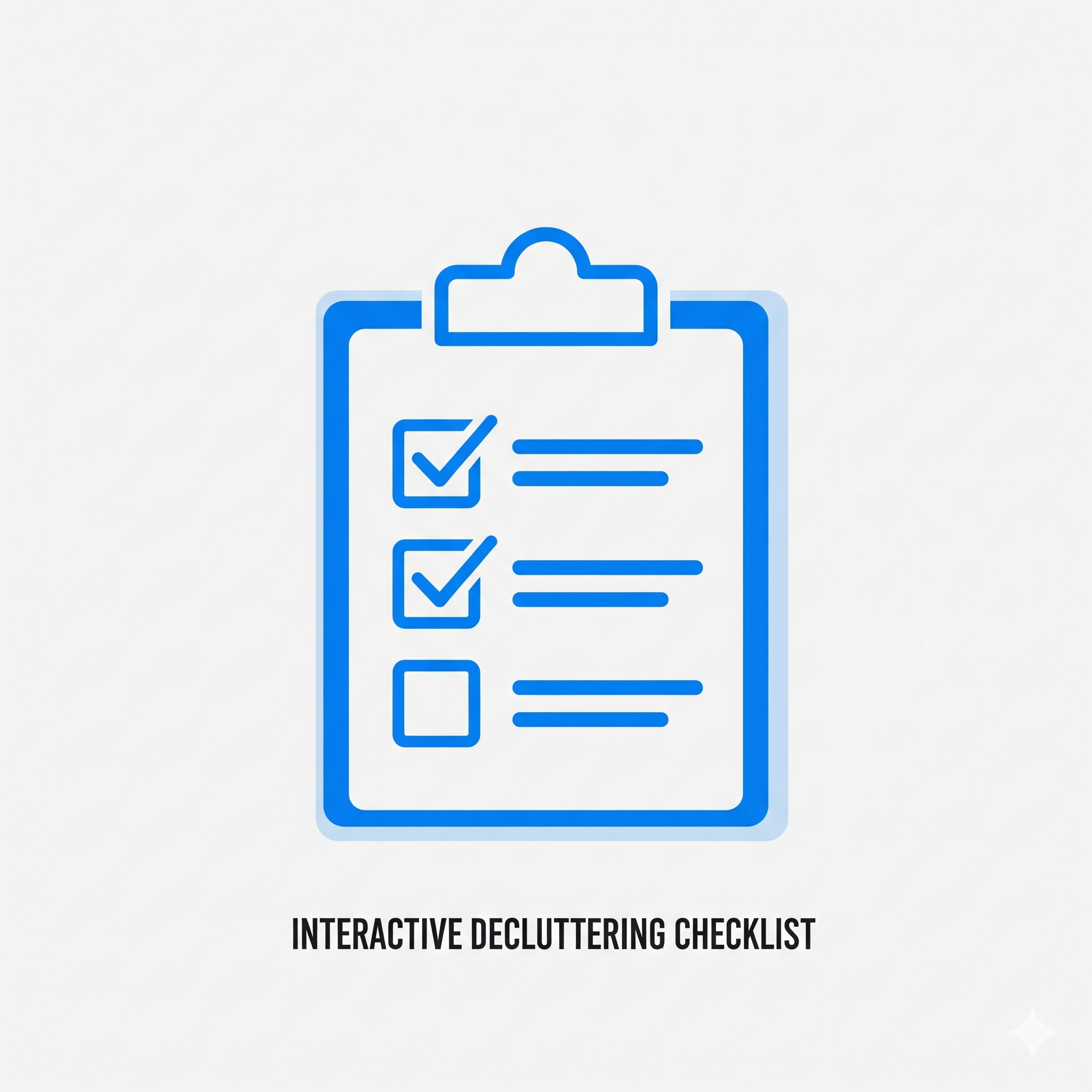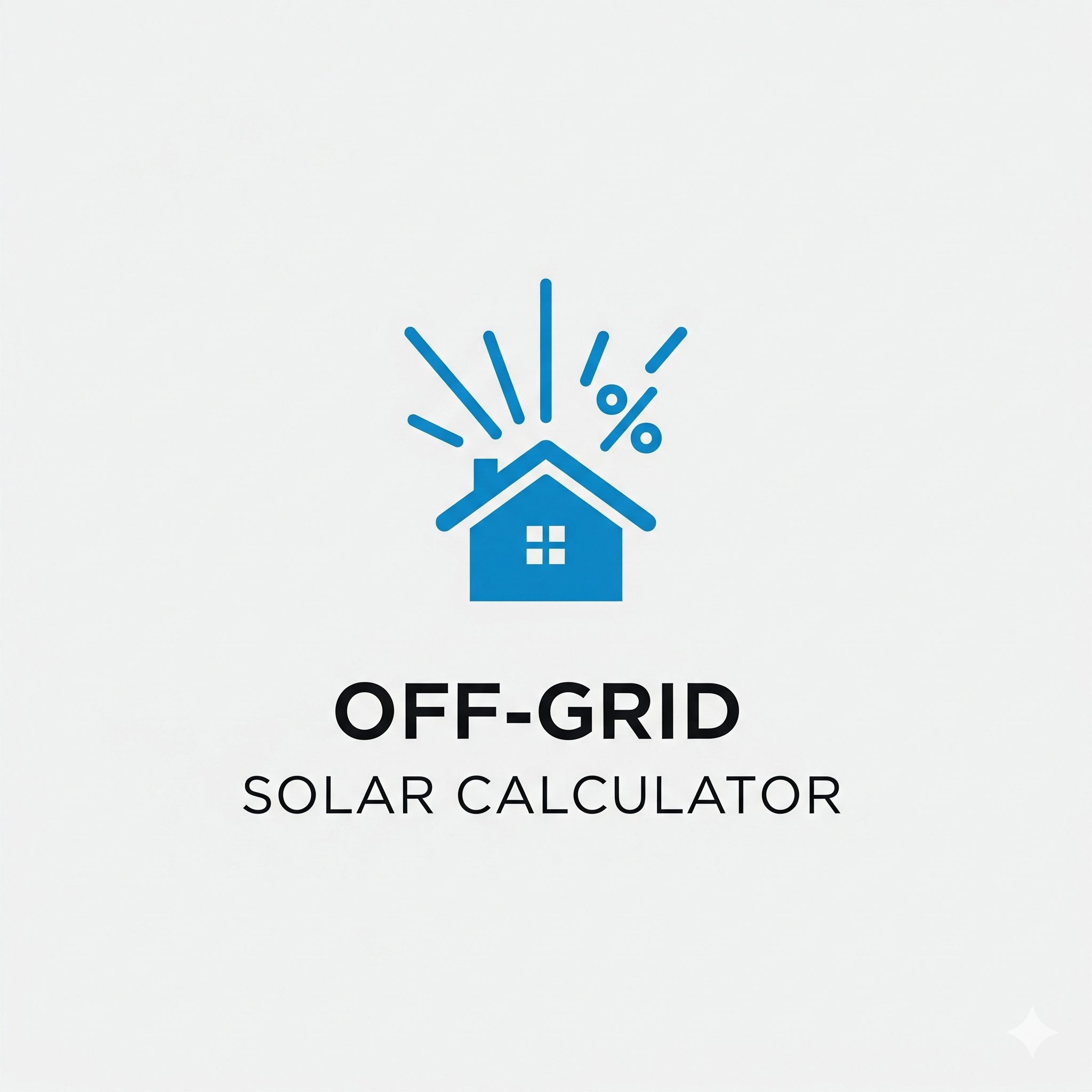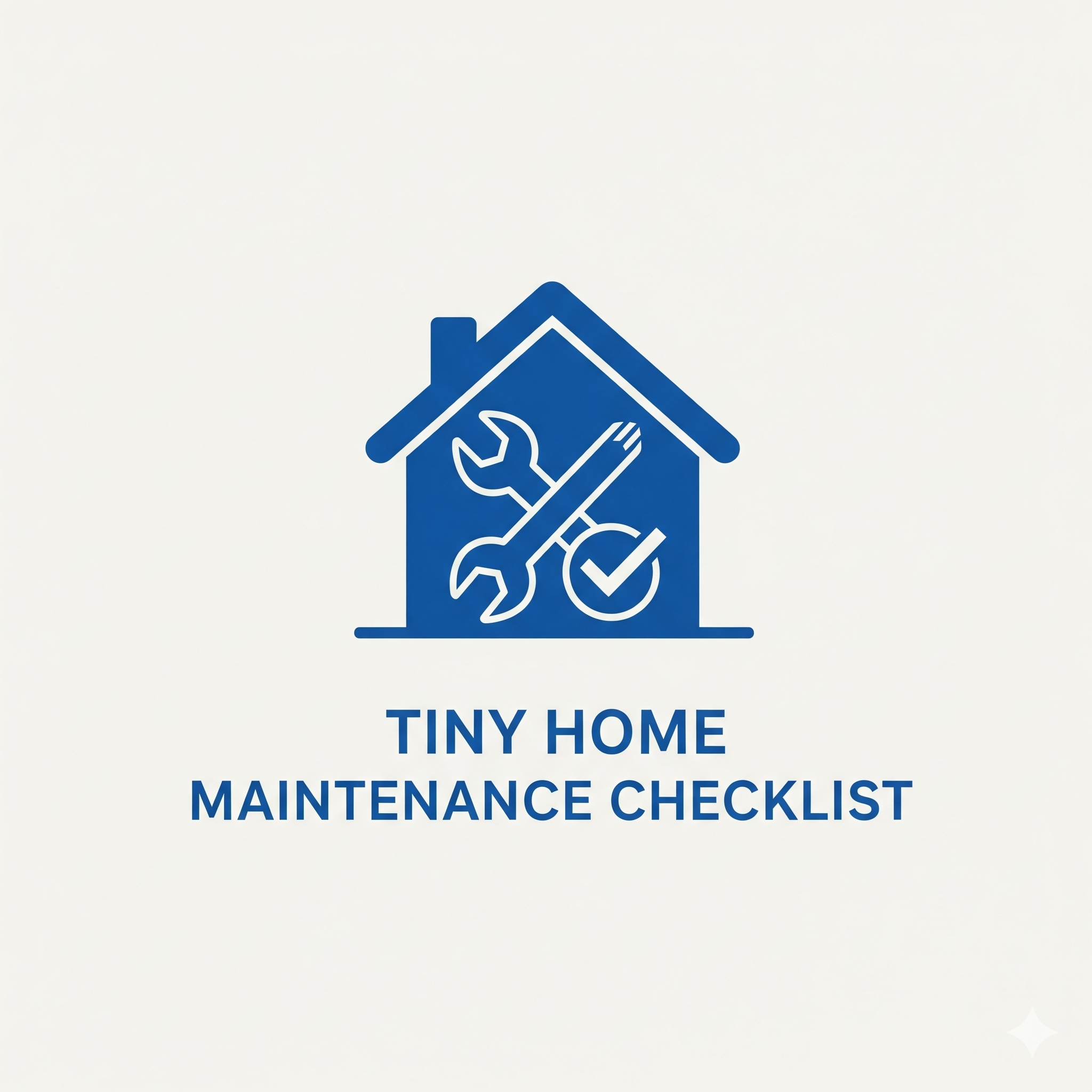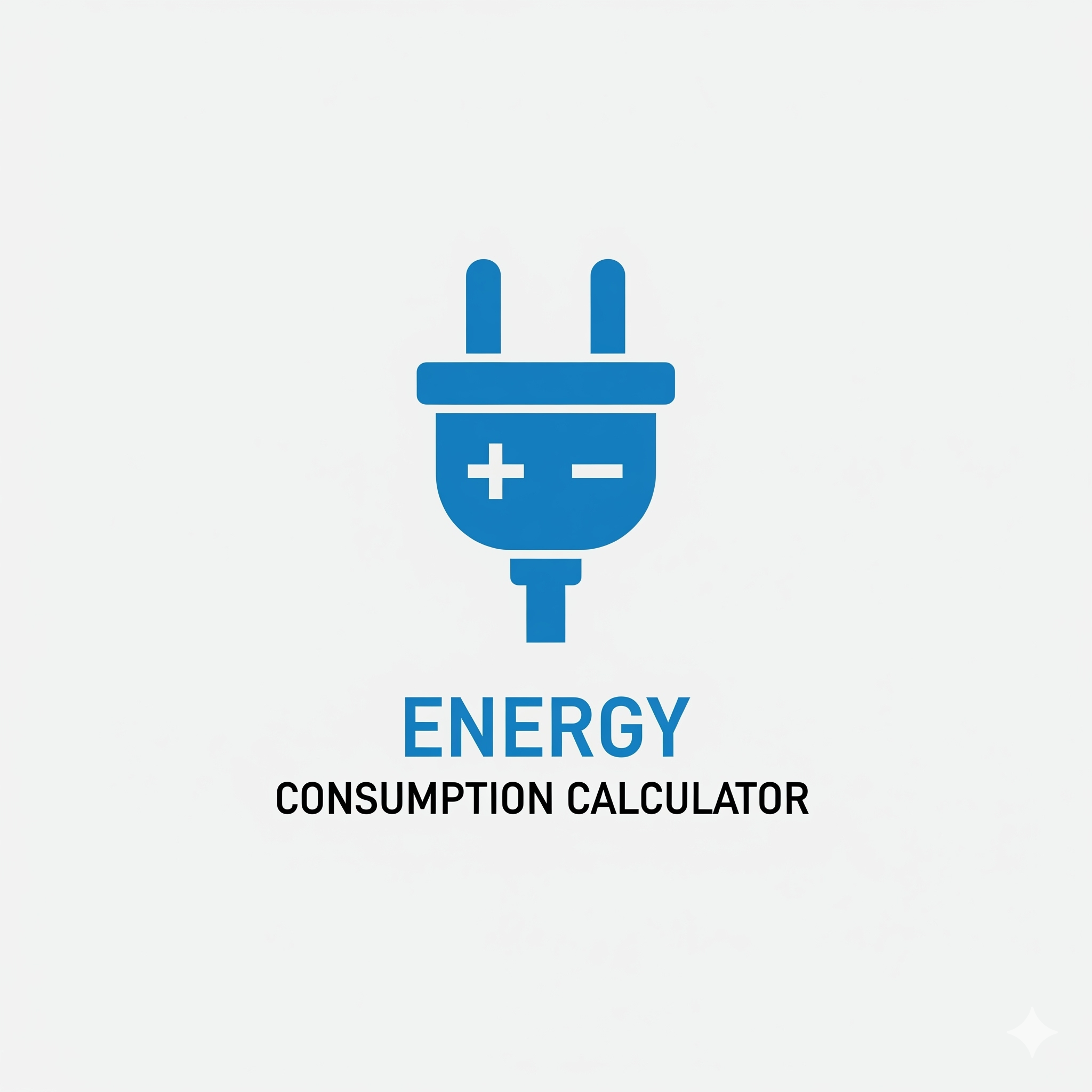Interactive Decluttering Checklist (By Room)
Use our Interactive Decluttering Checklist to tackle your home room by room. Get a step-by-step guide for your kitchen, bedroom, and more to make decluttering easy.
Interactive Decluttering Checklist
Feeling overwhelmed? Pick a room to start, and we’ll give you a step-by-step roadmap to a clutter-free space.
How to use this tool: Select a room you want to tackle. A detailed checklist will appear along with a progress bar. Check off each item as you complete it to see your progress in real-time. This interactive guide will keep you focused and motivated from start to finish.
Your Ultimate Interactive Decluttering Checklist: Conquer Clutter Room by Room
The thought of decluttering your entire home can be paralyzing. It feels like a monolithic, impossible task, a mountain so high you don’t even know where to begin. As a tiny home consultant at Neat Tiny Home, I’ve seen this overwhelm stop countless people in their tracks. The secret, however, is that you don’t have to conquer the whole mountain at once. You just have to take the first step on a single trail. That’s precisely why I created this **Interactive Decluttering Checklist**. It’s your map. It breaks down the monumental task of decluttering into a series of clear, manageable, room-by-room missions. By focusing your energy on one zone at a time and giving you the satisfaction of checking off tasks, this tool turns overwhelm into accomplishment.
This isn’t just a static list; it’s a dynamic guide designed to keep you motivated. The progress bar gives you a visual reward for your hard work, creating a positive feedback loop that makes you want to keep going. The simple act of checking a box provides a small dopamine hit, rewiring your brain to associate decluttering with satisfaction instead of stress. This **Decluttering Checklist** is built on a simple but powerful psychological principle: small, consistent wins lead to massive transformations. Forget the all-or-nothing approach. Today, you just need to pick one room and follow the steps.
The “Zone Method”: Why Decluttering Room by Room is the Key to Success
The single biggest mistake I see people make is what I call “cross-contamination clutter.” They start in the bedroom, find something that belongs in the kitchen, and walk it there. In the kitchen, they find a bill that belongs in the office, and so on. They spend hours walking around their house, moving piles, and at the end of the day, the entire house is in chaos and they feel defeated. The “Zone Method,” which this **Decluttering Checklist** is built upon, prevents this. You pick one room and you stay there. You have your designated boxes (Donate, Trash, Relocate), and anything that doesn’t belong in the room goes into the “Relocate” box. You only deal with that box *after* you have completely finished your current zone. This focused approach is dramatically more efficient and provides a clear, visible result in a short amount of time, which is the ultimate motivator.
Your Pre-Decluttering Toolkit: 15 Minutes to Prepare for Victory
Before you even click on a room in the checklist, take 15 minutes to set yourself up for success. This preparation phase is non-negotiable and will make the entire process smoother. Here’s what you need:
- The Four-Box System: Get four boxes or large bags and label them clearly: TRASH, DONATE/SELL, RELOCATE (for items that belong in another room), and KEEP (for items that need a proper “home” within the current room).
- A Timer: Don’t plan to declutter for six straight hours. You’ll burn out. Use a technique like the Pomodoro method: set a timer for 25 minutes of focused work, followed by a 5-minute break. It’s amazing what you can accomplish in these short bursts.
- Your Favorite Soundtrack: Put on some high-energy music, an inspiring podcast, or an audiobook. This helps turn a chore into a more enjoyable activity. As organization expert Gretchen Rubin notes in her work on habits, “pairing” an activity you dislike with one you enjoy can significantly increase your likelihood of doing it.
With these tools ready, you’re not just cleaning; you’re executing a well-planned mission. This mindset shift is critical for pushing through when you feel tired or indecisive.
A Deep Dive into the Clutter Hotspots
Every room has what I call “clutter hotspots”—areas where mess naturally accumulates. Our **Decluttering Checklist** is specifically designed to target these zones first, as clearing them provides the biggest visual impact. Let’s look at the kitchen. The checklist directs you to “Clear all countertops completely.” Why? Because clear surfaces immediately make a space feel larger and more serene. Once they’re clear, you’re more motivated to tackle the hidden clutter in the pantry or the junk drawer. In the bedroom, the checklist targets the “chair-drobe.” Clearing that pile of clothes and putting them away instantly reduces visual noise and makes the room feel more restful. Each item on the checklist is strategically placed to create momentum, guiding you from easy wins to more involved tasks.
When you get to a task like “Declutter your closet,” don’t just pull things out. Use a systematic approach. The “hanger trick” is one of my favorites: turn all the hangers in your closet to face the wrong way. As you wear an item, put it back with the hanger facing the correct way. In six months, you’ll have a stark visual representation of what you actually wear. It makes it much easier to donate the items on the hangers that were never turned. This is the kind of micro-strategy you can apply to many of the items on our **Decluttering Checklist**.
Maintaining Your Newly Organized Space: It’s About Habits, Not Perfection
Completing a room on the checklist feels fantastic, but the real goal is to keep it that way. Long-term success is about building small, sustainable habits, not achieving a fleeting state of perfection. Here are three simple habits to adopt to maintain your clutter-free zones:
- The “One-Minute” Rule: Popularized by author James Clear of Atomic Habits fame, the rule is simple: if a task takes less than one minute to complete, do it immediately. Putting a dish in the dishwasher, hanging up your coat, sorting a piece of mail—these are all one-minute tasks that prevent clutter from ever starting.
- The Daily “Closing Shift”: Just like a coffee shop cleans up at the end of the day, give your main living area a 10-minute “closing shift” before you go to bed. Wipe down counters, put away remotes, fold the blanket. Waking up to a tidy space is a gift you give your future self.
- The “One-In, One-Out” Policy: For every new non-consumable item that comes into your home, one similar item must leave. New pair of shoes in? An old pair goes out. This creates a steady state and prevents the slow, creeping accumulation of more stuff.
Decluttering is a journey, not a destination. It’s about creating a home that supports and energizes you, rather than drains you. Let this **Interactive Decluttering Checklist** be your guide for the first, most important steps on that journey.
Which room in your house causes you the most stress? Which one will you be tackling first with the checklist? Let’s cheer each other on in the comments!
Frequently Asked Questions (FAQ)
- I’m still feeling overwhelmed. Which room is the easiest to start with?
The bathroom is often the best place to start. It’s small, the decisions are usually less emotional (it’s easy to throw away an expired bottle of sunscreen), and you can get a quick, satisfying win in under an hour. - What do I do with all the stuff in my “Donate” and “Sell” boxes?
Act on them immediately! Schedule a pickup from a local charity like Goodwill or the Salvation Army, or put the boxes in your car right away to drop off. For selling, take photos and list the items on Facebook Marketplace or Poshmark the same day. Don’t let your “donate” boxes become a new form of clutter. - What if I start a room but can’t finish it in one session?
That’s completely fine! That’s what the interactive checklist is for. Your progress is saved visually as you check items off. You can come back to it later and pick up right where you left off. The goal is progress, not perfection in a single day. - How do I use this tool if I live with family or roommates who are messy?
Focus on your own personal spaces first, like your bedroom, your side of the bathroom, and your desk. Lead by example. When others see the positive transformation and how much calmer the organized spaces are, it can often inspire them to join in. You can also invite them to use the tool with you for common areas, turning it into a collaborative “mission.”




Post Comment